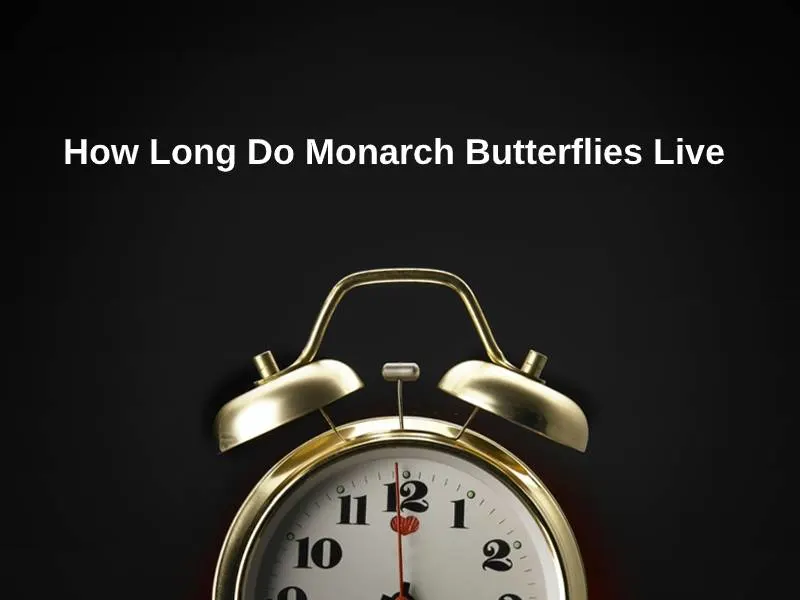Exact Answer: 2 to 6 weeks
There are millions of insects and animals in the world. Though the animals, birds, and insects all belong to their respective kingdoms, where they live, what they eat, how they breed, all tell a different story. Many animals and birds became extinct in course of time, while some still are popular and widespread. Some live only in their native lands, while some migrate or move when the seasons change. The lifecycle of every living organism in the world is different and it depends on various reasons.
Among many insects in the world, a butterfly is still one of the most popular, loved, and protected species of insects. There is a reason why they are loved so much, they are beautiful to look at. They are easy to maintain, but, they only live for a little while. Like every other insect, even monarch butterflies have several forms of life and stages before they grow fully and reach adulthood. Many bird sanctuaries have monarch butterflies.
Usually, a monarch butterfly lives for about 2 to 6 weeks. How long a monarch butterfly lives, is based on various factors like where they are born, where they grow, heredity, and much more.

How Long Do Monarch Butterflies Live?
| Lifecycle | Time |
| Egg | 3 to 5 days |
| Larva | 11 to 18 days |
| Chrysalis | 8 to 14 days |
The monarch butterfly undergoes four stages in its lifecycle, egg, larva, pupa, and adult. After the female monarch lays eggs, the eggs last for about 3 to 5 days. After that, the egg becomes a larva and stays that way for about 11 to 20 days. After that, the larva transforms into a chrysalis, which stays like that for about 8 to 14 days. Then, from the chrysalis, an adult butterfly grows. Including the duration of a complete life cycle, the butterfly lives for about 2 to 6 weeks.
A female monarch butterfly lays about 100 to 300 eggs in her entire lifetime and these eggs will hatch in about four to five days. When the eggs hatch, they are about less than 1 centimeter, and then after a while, they will start growing and in the end, they are about 5 centimeters long. The stages in between are called instars and after about five days, the butterflies will develop from a pupa to a fully grown adult monarch butterfly. Eclosion is the stage at which the butterfly develops from a pupa into an adult.
The monarchs normally breed in the summer and they live for about 2 to 6 weeks, in which they breed. The monarch butterflies mate and lay eggs, and they go through their full life cycle before becoming a complete adult.
Why Do Monarch Butterflies Live That Long?
The butterflies live anywhere milkweed grows and they migrate to Mexico during winter. The mating season of the monarch butterflies is around February and March and they lay the eggs on milkweed as they start moving towards where they live most of their lives, the USA. Facts are proving that the butterflies can live even for about 9 months.
Since they live commonly where the milkweed grows, The Rocky Mountain range, Northern Canada, and in Southern Ontario. The same species of monarchs that live in eastern North America are the same ones living in the west. Monarch butterflies weigh less than a gram and the weight can vary about 0.75 grams from a small monarch to a large monarch. Though the larva requires milkweed as food, the adult butterflies need nectar from different flowers as food.
Conclusion
The butterflies live for an average of about 2 to 6 weeks and the longest living butterflies have lived for more than 9 months to a year. Multiple reasons affect the average lifespan of a monarch butterfly, like even the generation they were born on. Some generations migrate while some hibernate a long time, and that can double the lifespan. It also depends on when they live and where they live.
Monarch butterflies live for longer in the wild than in captivity. The ones that migrate from August to September can live longer too. Monarch butterflies are in high danger when they are in the air, and since they are born in February and March, if they migrate, they normally don’t get through the spring.